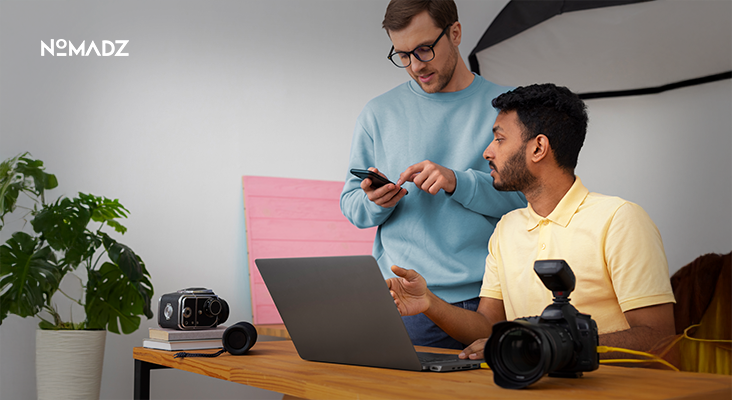How to Build Impactful Micro Influencer Marketing Campaigns on a Budget
With today’s crowded online environment, micro influencer marketing is becoming a popular way for brands to get real engagement without extra costs. Such influencers with their well-segmented audiences and affordable rates are now a small business and a startup game-changer.
Brands today favour micro influencers because they are known to generate real conversations and influence buying behaviours, particularly within a niche. This blog will show you precisely how to create effective campaigns on a budget without sacrificing results.
What is a Micro Influencer?
Before going into strategy, the micro influencer definition is key to understanding. Micro influencer follower count usually ranges between 10,000 and 100,000. Though their followers might be lower than macro or celebrity influencers, influencers typically have a more loyal and active following.
Unlike mega influencers, they feel more relatable and trustworthy – qualities that are gold in today’s authenticity-driven marketing climate.
Also Read: Impact of AI Influencers on the Future of Marketing
Why Micro Influencers Marketing on a Budget?
Connecting with micro influencer agencies or solo creators is highly cost-effective. Rather than six-figure payments for a celebrity’s one-off post, brands can work with many small influencers at a much lower cost and gain a more focused reach. This is not only a cost-effective way of running campaigns but also provides various other advantages.
Influencers tend to have better engagement levels than the macro ones because their content affects their loyal followers more. This results in a greater return on investment for small to mid-sized businesses. They also represent niches in general so that brands can reach segment markets more effectively.
There is also greater scope for flexibility in how collaborations occur, from reels and posts to stories and blogs, based on what the brand is trying to do. With an effective influencer marketing strategy, even small-budget brands can achieve real exposure and momentum.
How to Create an Affordable Influencer Campaign
Follow these steps to create an affordable campaign:
1. Define Your Goals and Target Audience

It all begins with determining what you require from the campaign: Is it more traffic to your site, sales from your product, more people knowing your product, or social media followers? Clearly defined goals will guide the campaign and allow you to narrow down micro-influencers best suited to your brand.
Just as important is knowing your audience – who they are, on which micro influencer platforms they exist, and what kind of content attracts them. That way, your collaboration will come off as natural and find the target audience.
2. Research and Identify Relevant Influencers

Ease up on follower counts; evaluate the following points: how active the base engages with content, the quality of content, and the demographic match of followers. Research shows that influencers having 15,000 followers engaged at a 6% rate bring better business value than influencers with 50,000 followers interacting at a 1% rate.
Screen potential candidates for influencer partnership by industry and location using databases from Aspire, I, along with Upfluence and Collabs, among others. If within budget, even outsource this task to an influencer agency.
3. Screen Influencers Thoroughly

Always look beyond that number of followers. Look at the content style, tone, and history of past collaborations with brands for the influencer. Their brand fit should naturally align with yours. Micro influencers who engage with their audience on a regular basis usually provide better performance.
Use these checkpoints:
- Are the followers authentic and important?
- Do they comment and reply to DMs?
- Is the content creative and consistent?
4. Make an Easy and Adjustable Collaboration Offer
When strategising how to work with micro-influencers, it must be clear. State what you need from them – quantity of posts, style of content, timeline, hashtags, and track links. But leave some freedom of creativity, too. Remember, they’re experts at understanding how to activate their audience better than anyone.
Be respectful and open; repeat business tends to provide reward than a singular deal. Pay what you can afford. Free goods or services, performance fees and flat fee payments are possible.
5. Use Metrics to Monitor and Optimise
Monitoring is important to campaign success. Utilise UTM links, promo codes, and platform analytics to track campaign effectiveness. Monitor metrics such as engagement rate, clicks, follower acquisition and conversions. Your marketing campaign isn’t complete when the post goes live – measure and optimise on an ongoing basis.
With time, you’ll be able to sharpen your strategy and achieve even greater ROI.
6. Scale What Works
After finding effective influencers and strategies, consider slightly increasing your budget to support ongoing partnerships with top performers. Using a micro influencer platform can help you to scale effectively by automating outreach, approvals, payments, and monitoring.
Also Read: Tips to Choose Right Influencer Marketing Platform
Conclusion
Creating an affordable, high-impact influencer campaign is not only possible but also sensible and highly effective today. Paid ads may look good on the outside but can be misleading and often lack authentic engagement. With smart planning, creative strategies, and by listening to real people, brands can reach passionate communities without spending too much or compromising their values.
People trust celebrities less now and prefer real, relatable creators who share genuine stories and experiences. That’s why digital marketers often focus on micro-influencers with niche audiences, strong connections, and higher engagement rates.
FAQs
Q. What are the 4 types of influencers?
A. The 4 types are as follows:
- Nano influencers: 1k – 10k followers.
- Micro influencers: 10k – 100k followers.
- Macro influencers: 100k – 1M followers.
- 1M+
Q. What is a nano influencer?
A. A nano influencer has 1,000 to 10,000 followers. They usually share close relationships with their audience. This results in very personal and trusted content.
Q. Why do smaller influencers get more engagement?
A. Smaller influencers are closer with their audience. Their posts are more genuine and less sponsored. This trust creates improved engagement rates.
Q. Why should companies work with micro or nano influencers?
A. They provide high engagement and niche coverage at lower prices. Brands get to enjoy genuine promotion and improved ROI. It’s perfect for niche, cost-effective campaigns.
Q. Is 10k microinfluencers?
A. Yes. It is the starting point for the influencer tier. Brands tend to begin campaigns here at the follower level.









Leave feedback about this